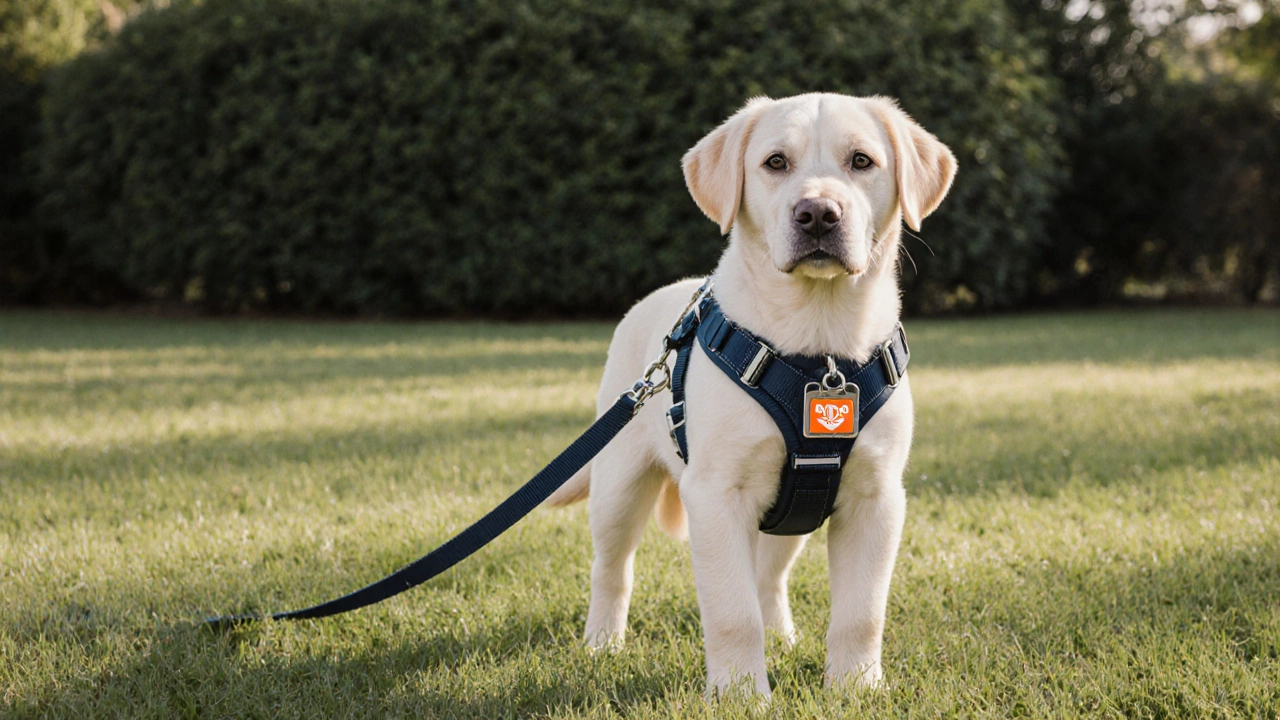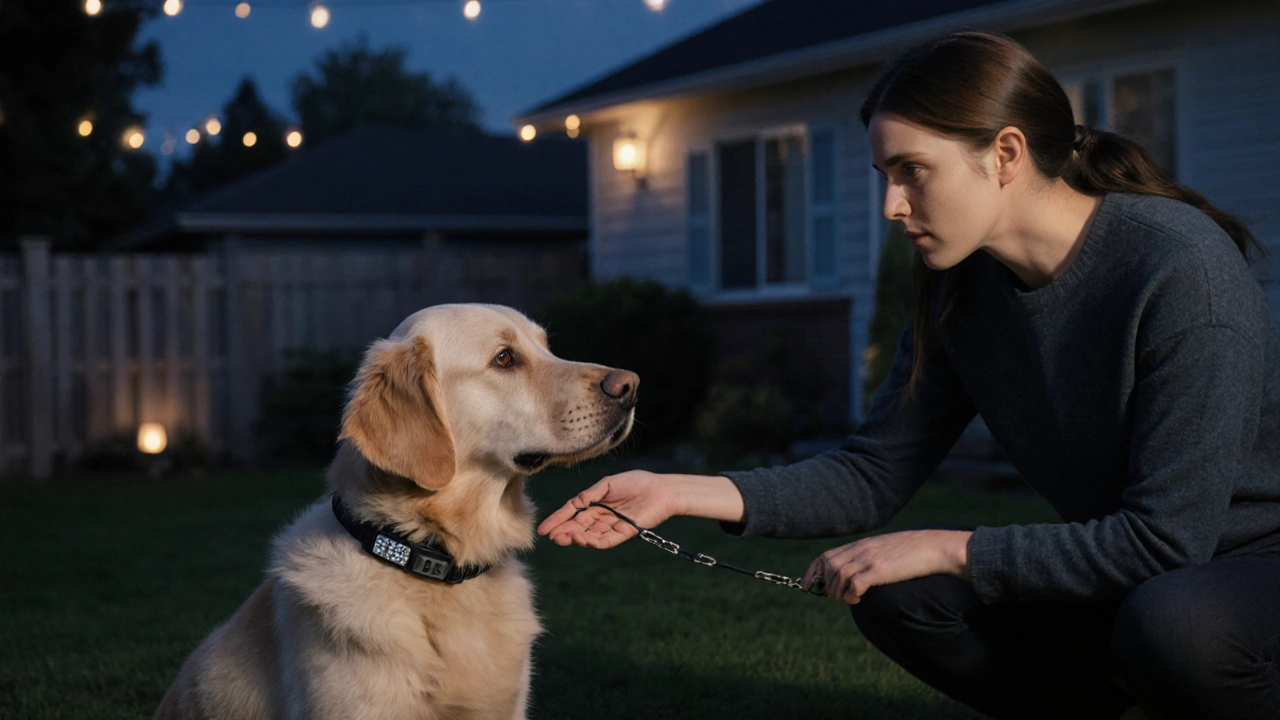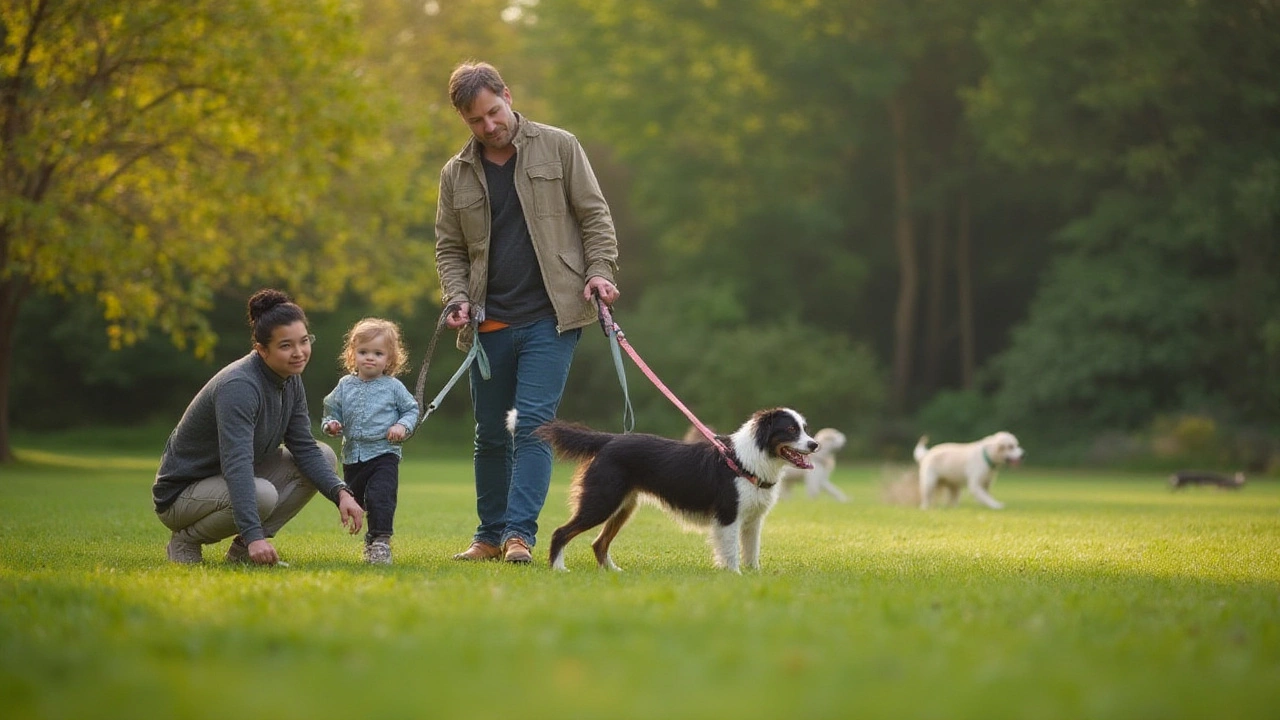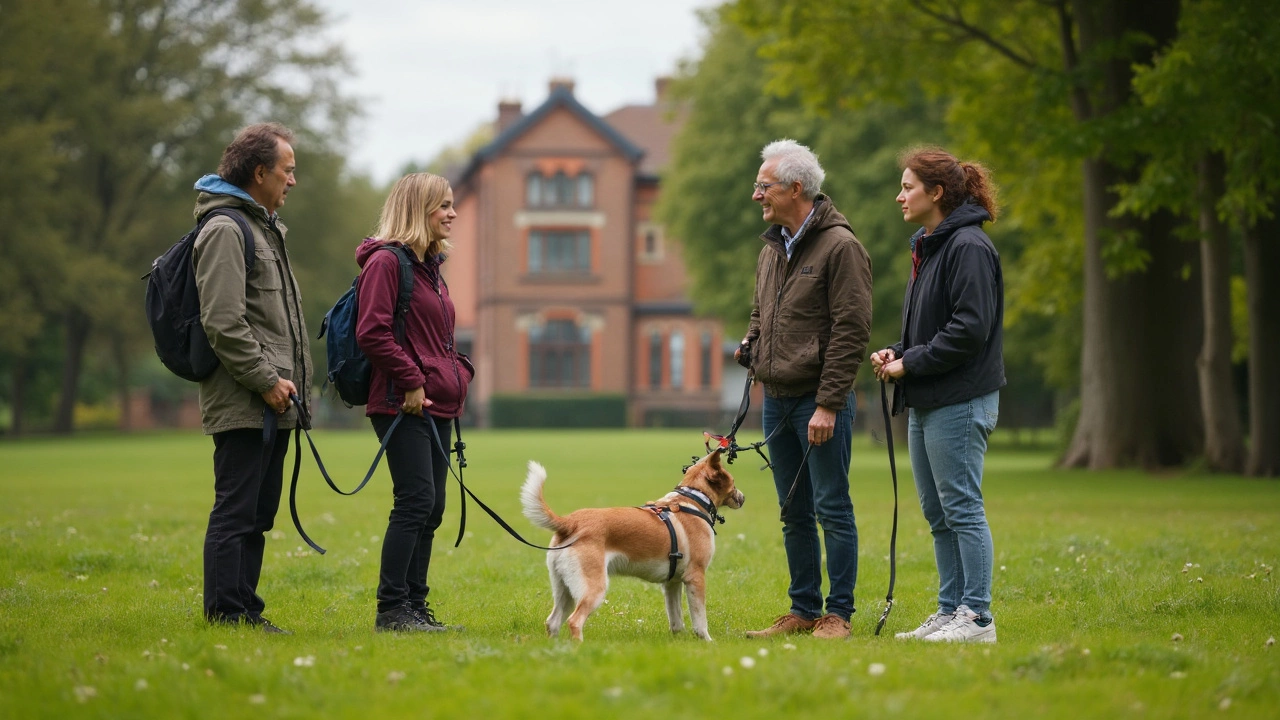Dog Collars – Your Quick Guide to Picking the Right One
When you shop for a collar, you’re not just looking for something pretty. A good collar keeps your dog safe, feels comfortable, and can even help with training. With so many options on the market, it’s easy to feel overwhelmed. Below you’ll find the basics you need to know so you can choose a collar that works for you and your furry friend.
Know the Different Types
There are three main families of collars: flat collars, harness‑style collars, and training collars. Flat collars are the classic nylon or leather straps you see on most dogs. They’re great for everyday walks and ID tags. Harness‑style collars spread pressure across the chest, which is kinder to dogs that pull a lot or have neck problems. Training collars include e‑collars, vibrating collars, and the controversial prong collars. Use them only if you’ve researched the safety guidelines and, ideally, consulted a trainer.
Size, Material, and Comfort Matter
First, measure your dog’s neck. You should be able to slip two fingers between the collar and the skin – that’s the sweet spot for comfort and safety. Next, think about material. Nylon is cheap and durable, leather feels premium but needs regular conditioning, and neoprene works well for dogs who love water. If your pup has sensitive skin, look for collars free of PVC or harsh dyes.For night‑time wear, many owners wonder whether to keep the collar on. If your dog wears a calm‑collar with pheromones, it can help with anxiety. Otherwise, a simple flat collar is fine as long as it’s not too tight and the tag doesn’t snag on bedding.
Training tools should be used responsibly. A vibrating collar can replace a shock‑collar for a hearing‑impaired dog, but it still needs to be introduced gradually. E‑collars are best left to professionals because the settings can easily be set too high. If you’re unsure, stick with a well‑fitted harness and positive reinforcement training.
Finally, don’t forget the style factor. A bright collar makes your dog easy to spot on walks, while a reflective strip adds safety on evening runs. Some owners match collar colors to their dog’s coat for a polished look – it’s a small touch that can make a big difference in how proud you feel.
In short, the right collar depends on three things: your dog’s size and health, the activities you do together, and any training needs you have. Measure correctly, choose a material that fits your dog’s skin, and pick a style that matches your lifestyle. With these basics, you’ll feel confident picking a collar that keeps your pup safe, comfortable, and looking good every day.

Should You Remove Your Dog's Collar at Night? Safety, Comfort, and Expert Tips
Should you remove your dog's collar at night? Learn the risks of overnight wear, why microchips are safer, and expert tips for keeping your dog protected without the collar.
View more
What Is the Alternative to a Breakaway Collar for Dogs?
Breakaway collars can be dangerous for dogs if they snap open too easily. Learn the best alternatives-harnesses, quick-release buckles, and smart systems-that keep your dog safe without the risk of accidental escape.
View more
What Is the Best Tool to Stop a Dog from Pulling on the Leash?
The best tool to stop a dog from pulling is a front-clip harness, not a choke or prong collar. It redirects pulling gently, reduces neck strain, and works with training to build calm walking habits. Head halters are ideal for strong or reactive dogs.
View more
Humane Alternatives to Shock Collars: Safe Training Tools for Dogs
Discover pain‑free training tools like vibration, citronella and clicker systems as humane alternatives to shock collars, with pros, cons, a comparison table, and step‑by‑step transition tips.
View more
Should You Remove Your Dog's Collar at Night? Pros, Cons & Tips
Thinking of removing your dog's collar at night? Get honest advice, real-world tips, and surprising facts about collar safety and comfort while your pup sleeps.
View more
Best Dog Training Collars: What the Pros Recommend in 2025
Looking for the best dog training collar? Trainers weigh in on expert picks, safety tips, and what really works for results in 2025.
View more
What Is Better Than a Prong Collar? Friendly Alternatives for Dog Training
Prong collars are a controversial tool in dog training, and plenty of owners feel uneasy about using them. This article explores why prong collars aren’t always the answer and offers practical, humane alternatives for better training and control. Get insider tips on which gear actually helps your dog learn and behaves kindly. Learn what the experts trust, what really works on walks, and how to make training more enjoyable for you and your pup. No fluff—just straightforward advice you can use right away.
View more
Best Type of Collar for a Dog: How to Choose Right
Picking the right collar for your dog isn't just about looks—it's about safety, comfort, and control. This article breaks down different collar types and explains what works best for different dogs. You'll find tips based on real dog behavior and practical advice for every lifestyle. From daily walks to training sessions, the right collar can make all the difference. Get answers to common questions and learn what actually matters when shopping for your pup’s collar.
View more
Do Vets Recommend E-Collars for Dogs?
Curious if vets really suggest e-collars for dog training? This article walks you through the facts, the real opinions from veterinary professionals, and the situations where they might or might not give the green light. It also covers safety tips and humane alternatives you can try. Whether your pup’s barking is out of control or you’re looking for safer ways to train, you’ll get practical answers here. Your dog’s comfort and well-being are front and center.
View more
Do Vets Recommend Dog Collars? What You Really Need to Know
Wondering if vets actually recommend dog collars? This article gets real about how vets feel about dog collars, when they suggest using them, and why sometimes they steer you toward harnesses instead. You'll learn about safety, comfort, health issues, and some surprising facts you might not expect. Get practical advice on picking the right collar for your dog and tips for keeping your pup comfortable. Find out what matters most to professionals who care for our pets every day.
View more
Prong Collars: Why Do So Many Dog Owners Hate Them?
Prong collars spark heated debates among dog owners and trainers. Some see them as useful training tools, while others call them harmful and outdated. This article looks at why prong collars are so controversial, what science and trainers say, and what alternatives exist. You'll get honest facts and tips to help you decide what's best for your dog. Expect real talk and actionable info.
View more
How to Train a Dog to Stop Barking: Tips and Tricks
Barking is a natural dog behavior, but sometimes it can get out of hand. Helping a dog learn when to be quiet can make a world of difference at home. We'll explore practical strategies and tips for teaching your dog to curb excessive barking, with insights into the role of dog collars and other helpful tools.
View more